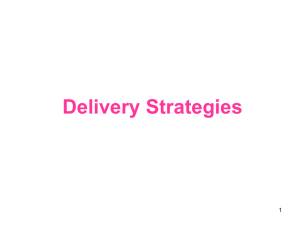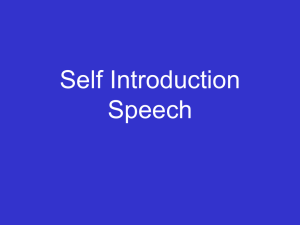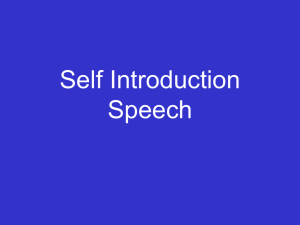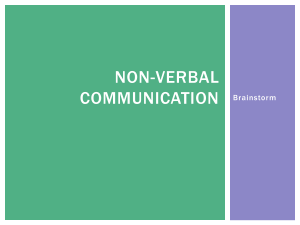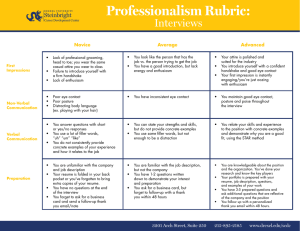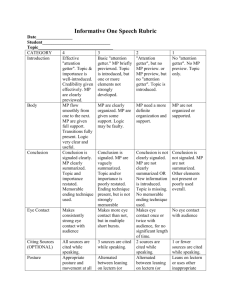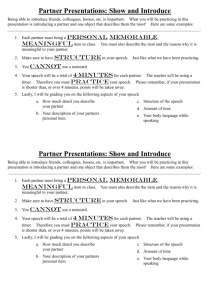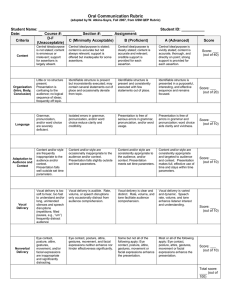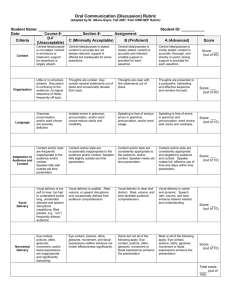Webster's defines teaching as, "to cause to know a subject." All too
advertisement
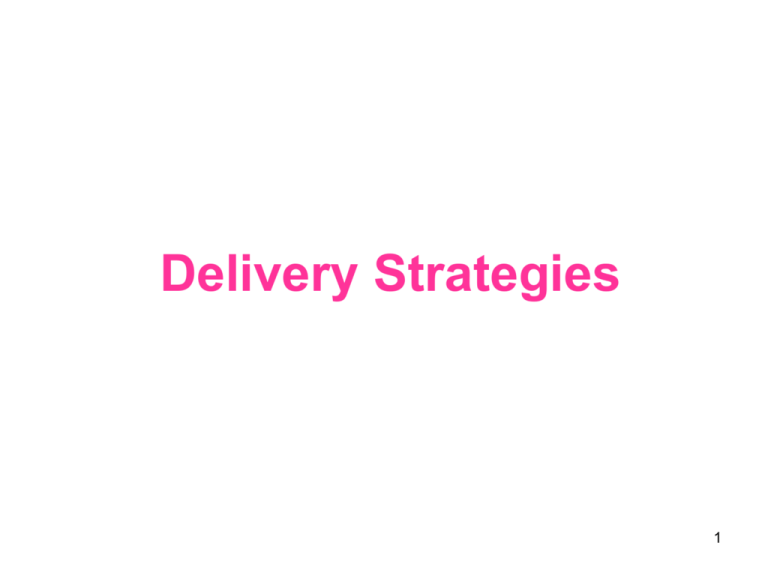
Delivery Strategies 1 2 Beginning 1 A Speech Before During 3 Ending 4 2 BEFORE Audience Analysis First of all, several questions need to be answered before you start preparing your speech: To whom am I speaking? What do I want to achieve in this speech? What do I want them to know, believe, or do as a result of my speech? What do the audience want from the speech? What is the most effective way of composing and presenting my speech to accomplish that aim as well as satisfy the needs of my audience? 3 What are the three most important considerations in your planning? Three most important considerations are: Audience Content Delivery 4 AUDIENCE CENTEREDNESS DISPOSITION INTEREST SIZE KNOWLEDGE TO ATTITUDE YOU PHYSICAL SETTING EXPECTATIONS 5 Structuring your speech Introduction Attention getter: joke? story? statistics? visual? audio? Why use attention getters? - to focus audience attention on the speech. - to create an organizing framework for the ideas, or information that is to follow (advance organizers) Introduce topic of speech - Relate attention getter to topic. Tie to the audience - why it is important for the audience to listen/what is in it for me? Preview main points 6 ORGANIZATION OF CONTENTS o Topical order : The speech is divided into sub-topics, each of which covers one aspect of the main content/ input. o Chronological order : The speech follows a time pattern in which you may narrate a series of events in the sequence in which they happen. o Spatial order : The speech follows a directional pattern. That is, the main points proceed from top to bottom, left to right, front to back, inside to outside, or some other route. o Causal order : The lesson input is organized according to a cause-effect relationship. o Problem-solution order : The lesson is divided into two main parts – the first showing a problem , the second giving the solution . 7 Methods of Delivery (1) • Manuscript – a speech that is written out word for word and is read to the audience. • Extemporaneous – a carefully prepared and rehearsed speech that is presented from a brief set of notes. • Impromptu - a speech delivered with little or no immediate preparation. Methods of Delivery (2) AUDIENCE APPEAL attire eye contact enthusiasm facial expression posture gestures voice 9 ATTIRE • Crooked tie or scarf. • Smeared make up or uncovered blemishes. • Open zippers, exposed shirt tails. • Pens or papers sticking out of pockets. • Food stains on your clothes. • Food stuck to your teeth. • Slips showing or torn pantyhose 10 EYE CONTACT 11 One of the most important ways of conveying feeling. 12 Volume – loudness/ softness Pitch – high/ low Rate – speed of speech Pauses – momentary break Pronunciation – accepted standard Articulation – physical production of particular sounds 13 14 The hands speak by themselves – By them we ask, promise, invoke, dismiss, threaten, entreat, deprecate, By them we express fear, joy, grief, our doubts, or penitence; we show moderation or profession and mark number and time. Quintillian •Gestures should illustrate not distract from your message. •Gestures should appear appropriate, natural and spontaneous. 15 Posture that is… UPRIGHT = CONFIDENT P RIGID = O SLOUCHED = LACK OF CONFIDENCE S LEANING FORWARD = INTERESTED/ WANT TO COMMUNICATE T U R E DISCOMFORT CROSSED ARMS = UNINTERESTED/ NOT PART OF `GROUP’ FACING DIRECTLY = OPEN COMMUNICATION TURNS AWAY = UNWILLINGNESS TO PARTICIPATE/ ANNOYANCE How you carry yourself conveys your self-image, and desire to communicate with others. CLOSED vs OPEN Posture 16 ENTHUSIASM 17 Choreography To get your audience members to react to your text, you will need a variety of dynamics. • Physical – move around, raise and lower your voice, use pace and pause, involve the audience, use hand gestures, use props. • Psychological – do not be afraid to show a little emotion. Your body and voice must match the tone of your words. If your language is strong, you must present a physical force to go along with your delivery. Let the words speak for themselves; reflect their nature through your voice. If you use the word "strangle," say it with a hint of menace in your voice. 18 DELIVERY CHECKLIST 19
